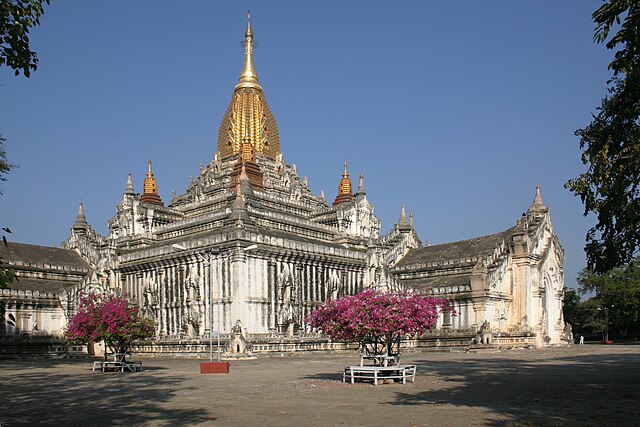Pagoda festivals are regular festivals found throughout Myanmar that commemorate major religious events in pagoda's history, including the founding of a pagoda and the crowning of the pagoda's hti (umbrella). Pagoda festivals are dictated by the Burmese religious calendar and often are held several days at a time. Major events in a pagoda festival typically do not coincide with Uposatha days, during which pious Buddhists observe the Eight Precepts. The majority of pagoda festivals are held during the dry season, from the months of Tazaungmon (November) to Tabaung (March). During the full moon day of Tabaung, Buddhist devotees in various parts of Myanmar also celebrate sand pagoda festivals.
Temporary bazaar and amusement rides of Shwesandaw Pagoda festival in Pyay, Myanmar
Burmese pagodas are stupas that typically house Buddhist relics, including relics associated with Buddha. Pagodas feature prominently in Myanmar's landscape, earning the country the moniker "land of pagodas." According to 2016 statistics compiled by the State Sangha Maha Nayaka Committee, Myanmar is home to 1,479 pagodas exceeding 27 feet (8.2 m) in height, a quarter of which are located in Sagaing Region. Several cities in the country, including Mandalay and Bagan, are known for their abundance of pagodas. Pagodas are the site of seasonal pagoda festivals.
Bawbawgyi Pagoda is one of the earliest existing examples of a Burmese pagoda.
Shwedagon Pagoda in Yangon is Myanmar's most prominent zedi.
Ananda Temple in Bagan is a classic example of a pahto.




